Abstract 4/2013
Table of content
Krzysztof Grzelec – Free public urban transport – goals and conditions of its implementation and operating
Tomasz Rokita – The problem of bicycle transportation by ropeways
Alina Giedryś, Jan Raczyński, Jacek Wesołowski – Łódź Agglomeration Railway and perspectives of its development
Maria Zych – Requested Stops System in Warsaw – examination of unwarranted bus stop button pressing effect
Aleksandra Ciastoń-Ciulkin – Quality criteria applied in the contracts for transport services in big cities and methods of its controlling
Abstracts
Krzysztof Grzelec
Free public urban transport – goals and conditions of its implementation and operating
Abstract: The issue of the free public transport is the subject of urban planning, economic, ecological and political analysis. The attempt to run a free public transport was made already in the twentieth century. The diversity in a range of free fares, running free public transport at a predetermined time as well as the experimental nature of free public transport, do not allow to clearly assess its results, including political – on transport policy. Free public transport is an attractive topic for the media and it can be tempting for politicians election program. Unfortunately, the media hype journalists only focus on selected issues, despite many important considerations related to running and functioning of free public transport.
This article presents examples of applying free public transport and results related to improving the functioning of the transport system. Author presents a list of potential benefits of “free fare” in public transport. He also critically refers to these potential benefits from the perspective of the transport economics, microeconomics and consumer behavior theory as well as marketing researches. This paper presents the results of the implementation of free fare in cities such as Hasselt and Leiden The author also refers to free public transport in Polish cities (Nysa).
Keywords: public transport, free fare, zero fare,
Tomasz Rokita
The problem of bicycle transportation by ropeways
Abstract: In recent years, the demand for using ropeways also during the summer has increased. This is associated not only with hiking tourists, but also with the increasing popularity of mountain biking. Therefore, the problem has arisen how to ensure safety of people travelling with their bicycles, while obtaining the highest possible capacity of the ropeway. This paper presents the problem of using ropeways to transport bicycles.
It presents ways of transporting bicycles by cableways found around the world, with attention paid to the advantages and disadvantages of each solution. The paper analyses solutions which enable the transportation of bicycles without the need to install additional handles to the existing chairs or gondolas as well as some options that require the use of special fastenings. It was demonstrated that the current methods of transporting bicycles are questionable in safety terms or hinder the operators in performing their duties and reduce the ropeway’s capacity. The paper also presents the requirements for ropeways designed to carry simultaneously passengers and to transport goods (including bicycles). Those requirements were collected by analyzing the relevant existing laws, in particular Directive 2000/9/EC of the European Parliament and of the Council relating to ropeway installations designed to carry persons, as well as the technical requirements on the basis of standards harmonized with the above Directive, and the Operation and Maintenance Manuals and Technical Regulations of ropeways operated in Poland. The summary recapitulates findings regarding the regulations or guidelines that need to be created in relation to the carriage of bicycles by ropeways.
Keywords: monocable aerial ropeways, chairlifts, bicycle transport, mountain biking
Alina Giedryś, Jan Raczyński, Jacek Wesołowski
Łódź Agglomeration Railway and perspectives of its development
Abstract: „Study on the functional development of Łódź railway junction” has been prepared in 2007, by the order of the Roads and Transport Company in Łódź. The aim of the Study was to analyze and to verify previous projects of the Łódź railway junction restructuring and evaluation of assessment of possibility to include high-speed rail and construction of the agglomeration railway system for the Łódź region. In 2008 the Marshall Office in Łódź decided on the development of agglomeration railway system including the city of Łódź and neighboring poviats. Development of the system, financed partially from the European Union financial sources and own funds of the Łódź Voivodeship, has been divided for stages. By 2015 following elements of the system is to be concluded: purchase of 20 railway traction units; construction of infrastructure equipment for those units; revitalization of railway lines in the region of Łódź; rebuilding of existing stops and construction of new stops, also with significant participation of the self-government. In the 2nd stage network of the agglomeration railway will be extended with the cross-town railway line running in the tunnel under the city centre. Originally the agglomeration railway is to create conditions to appropriate urbanization of the region and to indicate to the investors and inhabitants main urbanization axis with the efficient public transport. Thus it is to counteract chaotic developments of residential areas without possibility to provide them appropriate public transport. Defined aim is at minimum 25 – 30% participation of the railway transport on the main transportation axis. Time of the transfer from the border of agglomeration to the centre of Łódź should be shortened at the minimum till 30 minutes, twice comparing to the current situation.
Key words: transport system, rail transport, railway junction, integration
Maria Zych
Requested Stops System in Warsaw – examination of unwarranted bus stop button pressing effect
Abstract: In Warsaw, together with a series of tests related to the idea of conditioned bus stops system implementation (SPNŻ), a participant observation has been carried out in order to establish some factors conditioning passengers’ inclination to press the STOP button, despite of their knowledge that the given bus stop is not necessarily conditioned. The article presents the results of this observation, showing such elements as: range of the effect, depending on bus stop localization, bus line, vehicle type and passengers’ opinions on the matter. Then it has been confirmed, that passengers press the STOP button in the vicinity of 20% unconditioned bus stops, even though the vehicle they’re traveling in is bound to stop on them anyway. However, the reason of such behavior turned out to be equivocal and hard to determine. Unfortunately, the test results are not representative in the scale of the whole agglomeration, but it appears to be wise to assume that the main issue affecting passengers’ tendency to press the STOP button redundantly is in some measure – type of bus (specificly number of STOP buttons), bus line characteristic and purely psychological and emerges merely from their uncertainty of whether the bus is going to stop where it is supposed to, or not (and this uncertainty itself stems from various reasons). There is also a possibility of some frequency swings, varying in rush hours and outside them. Perhaps it would be of great utility to extend and itemize the whole examination a bit. Nonetheless, observation of such passenger behavior has been considered useful not only in terms of convincing them to SPNŻ system, but also it could serve as a good example for all those policymakers, who might realize that the part of society proves its conscious or oblivious preparation for introducing the replacement of unconditioned bus stops with conditioned ones.
Key words: requested bus stops, public bus transport, public transport
Aleksandra Ciastoń-Ciulkin
Quality criteria applied in the contracts for transport services in big cities and methods of its controlling
Abstract: In Poland rules for contracting transport services in public transport are normalized in The Actof law of December 16, 2010 on collective public transport. According to this regulation all contracts should include – among others – conditions relating to the quality norms and improvement of services quality of collective public transport. Thus, the article is a review of quality criteria applied in the transport contracts in big Polish cities (more than 250 thousand inhabitants). Nine transport contracts currently legally binding in Warsaw, Krakow, Łódź, Wrocław, Poznań, Gdańsk, Gdynia, Katowice and Lublin have been analyzed. In the first part of the article quality criteria expected from the carriers in particular cities have been presented and in the second part of the article methods of controlling of transport services in the light of above criteria have been described. The most frequently applied quality control criteria have been divided in four sets of quality features: punctuality of courses, reliability of courses, quality of rolling stocks (completeness of markings, technical conditions, vehicle cleanness) and service quality of engine driver (motorman) (technique of driving and stop a train at the stations, sophistication – personal attitude of the staff). Also additional quality criteria typical for individual cities have been presented. Synthetically methods of transport service’s quality control in particular cities have been presented. The most often service’s quality control is held through identification of single incorrectness’s or through defining simple statistical indicators based on sequences of observations. Also connections between results of the control of the service quality and payment for those services have been presented.
Key words: public transport, quality, quality criteria, quality control

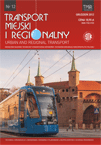 SITK RP
SITK RP 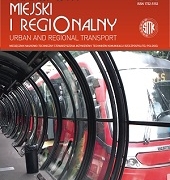
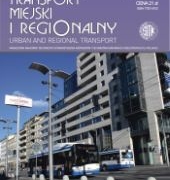 SITK RP
SITK RP 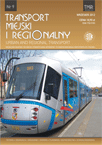 SITK RP
SITK RP 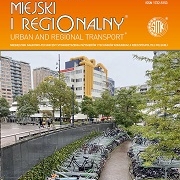 SITK RP
SITK RP 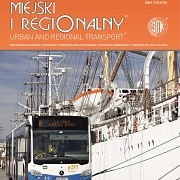 SITK RP
SITK RP 
 SITK RP
SITK RP SITK RP
SITK RP